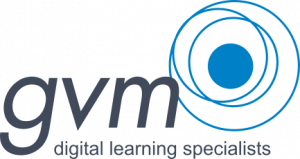In recent weeks I’ve spoken about xAPI and in particular how it relates to the idea of 70:20:10.
Today I gave a presentation on xAPI and found myself looking at blank faces when I got to that 70:20:10 part. to appreciate xAPI means knowing about 70:20:10 and so I found myself on a 70:20:10 tangent.
I know that while many readers have a good idea of this term, but not many have an idea where it came from, what evidence there is for it and what kinds of activities fall into each category. I thought I’d present some of what I told my group here…
The term 70:20:10 is a reference to the fact that humans were not designed for classrooms let alone LMSes. We learn by doing or by being shown. Around 40 years ago, some work was done to try to measure how much we learn in each way. In 1971 Allen Tough from the University of Toronto published the following statement ‘about 70% of all learning projects are planned by the learner himself’ about fifteen years after that, Morgan McCall, Bob Eichinger and Michael Lombardo (all working at the Center for Creative Leadership in North Carolina)went on to observe that for corporate settings,
“Lessons learned by successful and effective managers are roughly:
70% from tough jobs
20% from people (mostly the boss)
10% from courses and reading”
There have been a number of researchers since then who have cited similar ratios and though the importance really is not whether it’s 70:20:10 or another ratio – what’s important is that learning on the job, gaining experience, interacting with colleagues and performing tasks are by far the most effective way to learn.
Casebow and Ferguson identified informal chats with managers and on-the-job tuition from supervisors are the best way to teach employees. In fact our everyday experience is that when left to their own devices, people want to be shown – that’s one reason so many use YouTube as their primary self education resource.
The challenge for educators is one of stepping away from the instruction they were trained to deliver and focus instead on allowing people to teach themselves. This is easier said than done. The questions it raises include:
- Will busy people actually set aside the time to learn? How will we know?
- How will we link learners to the best mentors?
- How will we handle those least skilled at self education?
- How will we accredit staff?
- How can we apply quality control to the information people find?
- How will people be able to identify all their own knowledge gaps for themselves?
The answers to these and other questions vary between situations but the important point is to provide options. Creating an environment where people can indulge their curiosity and are safe to fail while not ignoring the 20 and the 10.
What this looks like will vary as I say but examples of ways to harness the “70” include:
- Increasing people’s level of responsibility perhaps through affording greater control, more autonomy, opportunities to lead or to join a committee or a smaller team.
- Increasing the diversity of experience through role swaps or secondments
- Allowing people to develop existing knowledge, applying it to increasingly specialist or more complex situations, stretch assignments or train others
- Increasing the exposure to practical outcomes by being assigned to new projects and to real situations earlier
- Encouraging people to think – to research ideas and reflect on work done.
The “20” is focused on collaboration. Options include:
- Joining professional bodies, attending events, joining industry groups and attending conferences
- Implementing mentoring programs formally or encouraging informal mentoring
- Ensuring that your corporate culture encourages people to seek advice and act as a sounding board to others
- Implementing a policy of group discussions, group debriefs
- Building the mentoring skills of members of the leadership group
Looking at it this way, the task is much less daunting. For example:
You will probably be doing some of these things now!
It’s usually far easier to get people enthusiastic about these kinds of activities than attending formal learning.
These activities scale naturally – while a larger team makes class based learning a bigger challenge, the opposite is the case when you rely on team based activities. The bigger the group, the easier it is!
It’s great for budgets – much of this requires very little outlay financially yet the return is greater (70 and 20 as opposed to 10).
Little surprise then, that the 70:20:10 model was instantly attractive to trainers from a theoretical standpoint. The practice has been harder to imagine in part because it involves such a conceptual rethinking, in part because it relies on everyone taking responsibility including the leadership group and in part because of those tricky questions above related to quantifying and measuring.
Cultural changes are what HR and L&D are good at. Learning Analytics – measuring the amorphous is where xAPI comes in. And now, you’re not on your own. The new xAPI Trailblazers Group is here to help you make 70:20:10 and xAPI work in your organisation. Want to know more? Drop me a line!
